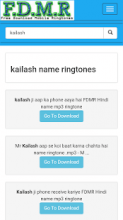IsoBuster V4.9.1.0
IsoBuster is an award winning , highly specialized and easy to use CD and DVD data recovery tool. It supports all CD and DVD formats and all common CD and DVD file-systems… Rescue lost files from a bad or trashed CD or DVD disc, save important documents, precious pictures, video from the family, your only system backup.
Start up IsoBuster, Insert a CD or DVD, select the drive (if not selected already) and let IsoBuster mount the media. IsoBuster immediately shows you all the tracks and sessions located on the media, combined with all file-systems that are present. This way you get easy access, just like explorer, to all the files and folders per file-system. Instead of being limited to one file-system that the OS picks for you, you have access to “the complete picture”. Access data from older sessions, access data that your OS (e.g. Windows) does not see or hides from you etc.
Isobuster interprets CD image files, such as:
*.DAO (Duplicator), *.TAO (Duplicator), *.ISO (Nero, BlindRead, Creator), *.BIN (CDRWin), *.IMG (CloneCD), *.CCD (CloneCD) , *.CIF (Creator), *.FCD (Uncompressed), *.NRG (Nero), *.GCD (Prassi), *.P01 (Toast), *.C2D (WinOnCD), *.CUE (CDRWin), *.CDI (DiscJuggler), *.CD (CD-i OptImage), *.GI (Prassi PrimoDVD), *.PXI (PlexTools), *.MDS (Alcohol), *.MDF (Alcohol), *.VC4 (Virtual CD), *.000 (Virtual CD), *.B5T (BlindWrite), *.B5I (BlindWrite), *.DMG (Apple Macintosh), *.IBP (IsoBuster), *.IBQ (IsoBuster), *.NCD (NTI).
IsoBuster 4.3 Released!
This version features full support for the XFS file system. Exploring, extracting, finding missing files and folders etc.
Also new in this version is the support for brand new file extensions *.1Kn, *.2Kn, *.4Kn, *.8Kn and so on (instead of the generic *.dsk for instance). The naming convention has been inspired by the “Advanced Format (4K native)”. Basically when IsoBuster now creates a generic block per block image file of a drive that natively contains more than 512 bytes per block, it uses the appropriate extensions: *.1Kn – *.64Kn.
In practice (because I haven’t seen any other situation) you will encounter this on 4Kn drives (4096 bytes per block: *.4Kn) and Plasmon UDO2 drives (8192 bytes per block: *.8Kn). The beauty is that now any application immediately knows what the correct sector size is inside the generic image. IsoBuster’s heuristic routines to determine the sector size by itself are unparalleled, and improved once again in this version, so IsoBuster doesn’t really need it, but it will make life easier for everyone and it’s ideal for images that contain data that doesn’t 100% correlate to a specific sector size.
Global adoption of this straightforward extension naming convention will be a step forward dealing with generic more-than-512-bytes-sector image files.
But that is not all. As usual there are plenty of improvements, a few fixes and other new functionality, such as dealing with RAID and LVM data structures, WBFS and so on.
Changes / New:
- • Full support for the XFS file system
- • Recognition and support for RAID 1 structures inside a partition, to find the file systems within
- • Recognition and support for LVM (Linux’ Logical Volume Manager) inside a partition, to find the file systems within
- • WBFS partition support. Shows what images are stored in a WBFS partition
- • Open *.wbfs files and show the images that are stored in the file
- • Full support for 8KB (8192 bytes-per-block) devices such as Plasmon UDO2 drive etc.
- • Introduction and use of *.1Kn, *.2Kn, *.4Kn, *.8Kn, … file extensions for disk images of drives with higher than 512 bytes per sector
Improvements:
- • Improved detection of the proper block size in image files based on partition and file system data
- • Optimized HFS Partition parsing to deal with both native-blocksize Partition Map entries and 512-byte Partition Map entries
- • Implemented DICOM signatures in finding files based on their signature (Found during a scan for missing files and folders)
- • Create a UDF File system when we have a valid VRS, AVDP and VDS. Even when the FSD is absent. So that the user knows there’s at least UDF present
- • Make sure the UDF VRS sequence also works on higher-than-2K-sectors when VRS structures are located in their own physical block rather than every 2K (For instance: Plasmon UDO2 drive with 30GB UDO disk vs. MS UDF on 4KN drives)
- • Open Image file drop functionality now also works when a file is dropped on the ListView (right pane) or breadcrumb control (top)
- • Implemented work-around to still load FAT (on USB sticks for instance) when the first x bytes of the BPB have been erased (by an unknown process / application)
- • Support format *.s01 again (disabled in previous version) after extensive testing to confirm that it works
- • Show “Managed Clone”, not just “Managed Image File” where and when relevant. Changes in various screens and dialogues
- • Repaint TreeView icons if hovered over, to update the object’s status (should it have been expanded already during a different process (e.g. Search))
- • *.dd images are now always treated as ‘not optical’ (to avoid loading as optical (tracks / sessions) if nothing meaningful can be found inside)
- • Ability to always confirm the destination drive of a managed clone
- • Show the destination drive in the managed image clone completion confirmation dialogue
- • Improved progress dialog when creating and completing managed image files / clones
- • Improved Managed Image File and Managed Clone Properties dialogue
- • Ability to suppress write error messages (OK to all) during the making of a managed image file or clone (for instance when completing on demand on media that is not big enough to hold the full range)
- • Make sure write errors, during the creation or completion of a managed image file or clone, are marked as bad sectors, even though the read on the source media was successful
- • Implemented “Limit:” keyword for search, so that the search can be limited to ‘limit’ count of matches (for instance *|Limit:10 )
- • Added command {%SELF} to the export functionality to also include information of the target file system itself (for instance to display the root’s extents)
- • Added command {%DATETIME(NA)=EMPTY} to the file export functionality to return an empty string instead of “N/A” on objects with an invalid or missing date-time property
- • Added tag <%TAB> to the file export functionality to easily add tab characters to the output
- • Plenty of other improvements, changes and re-writes in the core code / engine, as this is a living project and to deal with the ever growing new functionality
- • Various other GUI improvements
Fixes:
- • If IsoBuster is started idle, without auto-selecting a drive, attaching or removing a drive doesn’t change that state anymore
- • Fixed exception error when displaying a popup menu without any drives present or selected (under certain conditions)
- • Improvements in time and date display because negative second values are possible in Unix / Linux file systems
- • Do not abort on empty GPT partition table entries, continue checking instead (finds more partitions in some cases)
- • Fixed {%LT} and {%ISO8601} leaving a “}” character behind in an exported list.
Download:
- 911 reads








